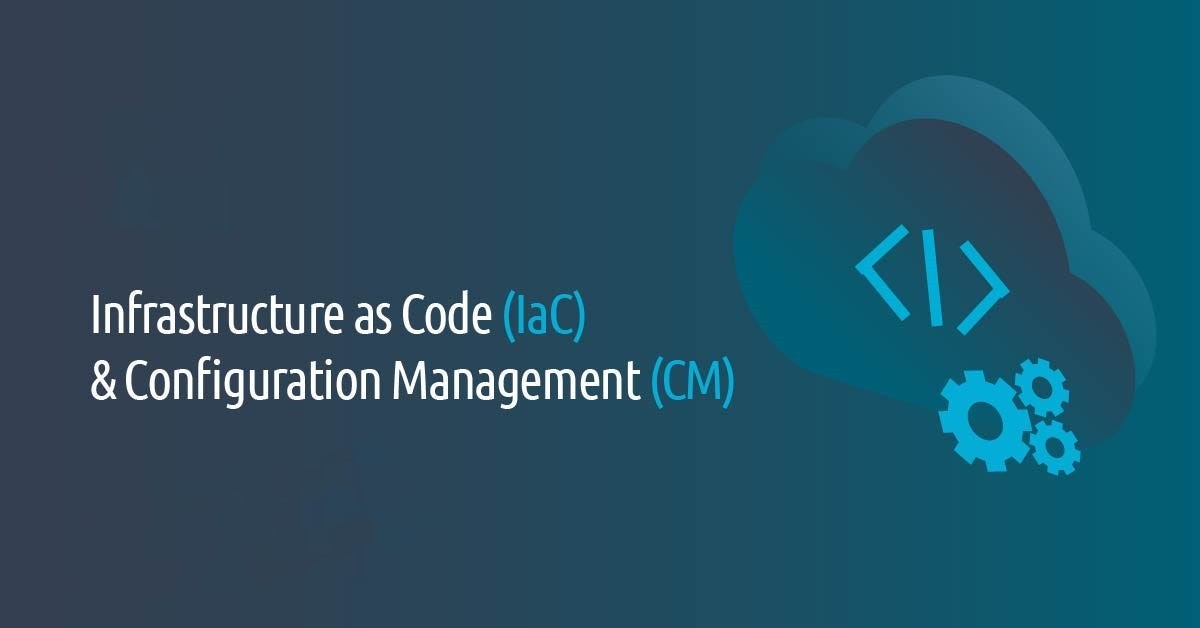Day 53 : Understanding Infrastructure as Code and Configuration Management
 Rahul sharma
Rahul sharmaTable of contents

Infrastructure as Code (IaC):
Infrastructure as Code (IaC) is a practice in software engineering that involves managing and provisioning computing infrastructure (e.g., servers, networks, databases) using machine-readable definition files, rather than manually configuring hardware or virtual machines. This approach treats infrastructure in a manner similar to how software code is managed, versioned, and deployed.
Key components of Infrastructure as Code include:
Declarative Definition: Infrastructure is defined declaratively using configuration files written in formats such as YAML or JSON. These files specify the desired state of the infrastructure, including the resources to be provisioned, their configuration settings, dependencies, and relationships.
Version Control: Infrastructure code is stored in version control systems (e.g., Git), enabling teams to track changes, collaborate, and roll back to previous versions if needed. Version control ensures consistency, repeatability, and traceability of infrastructure changes.
Automation: IaC tools (e.g., Terraform, AWS CloudFormation) automate the provisioning, configuration, and management of infrastructure based on the definitions provided in the code. This automation reduces manual errors, accelerates deployments, and ensures consistency across environments.
Scalability and Flexibility: IaC enables infrastructure to be treated as code, allowing for dynamic scaling, modularization, and reuse of infrastructure components. Changes can be easily applied across multiple environments, making it easier to manage complex and evolving infrastructure requirements.
By adopting Infrastructure as Code, organizations can achieve benefits such as improved agility, scalability, reliability, and cost efficiency in managing their IT infrastructure.
Configuration Management:
Configuration management is the process of systematically managing and controlling the configuration settings of software applications, operating systems, and infrastructure components to ensure consistency, stability, and compliance with organizational standards and policies.
Key aspects of Configuration Management include:
Configuration Item (CI): A configuration item is a fundamental unit of configuration management, representing any component or resource that needs to be managed and controlled. Examples include servers, network devices, databases, and software packages.
Configuration Baseline: A configuration baseline is a predefined set of configuration settings or standards that serve as a reference for ensuring consistency and compliance. Baselines are used to establish the desired state of configurations and monitor deviations from that state.
Change Management: Change management processes govern the lifecycle of configuration items, including the creation, modification, and retirement of configurations. Changes are assessed, approved, and implemented in a controlled manner to minimize risks and disruptions to services.
Configuration Automation: Configuration management tools (e.g., Puppet, Ansible, Chef) automate the deployment and enforcement of configuration settings across distributed systems. These tools facilitate the provisioning, configuration, and maintenance of infrastructure at scale, ensuring consistency and reducing manual effort.
Auditing and Compliance: Configuration management practices include auditing and monitoring configurations to detect unauthorized changes, vulnerabilities, and non-compliance with security policies and regulatory requirements. Audits help maintain the integrity and security of IT systems.
TASK
Read more about IaC and Config. Management Tools
Give differences on both with suitable examples
What are most commont IaC and Config management Tools?
Research Infrastructure as Code (IaC) and Configuration Management Tools:
Begin by researching Infrastructure as Code (IaC) and Configuration Management tools. Look for reputable sources such as documentation, tutorials, articles, and case studies to gain a thorough understanding of each concept and the tools associated with them.
For Infrastructure as Code, explore tools like Terraform, AWS CloudFormation, Azure Resource Manager (ARM), Google Cloud Deployment Manager, and Ansible.
For Configuration Management, delve into tools such as Puppet, Chef, Ansible, SaltStack, and CFEngine.
Understand Infrastructure as Code (IaC):
Define Infrastructure as Code and its key principles, such as declarative definition, version control, automation, and scalability.
Provide examples of how IaC tools are used to provision and manage infrastructure resources using code. For instance, Terraform can be used to define infrastructure in a declarative manner using its HashiCorp Configuration Language (HCL) or JSON.
Understand Configuration Management:
Define Configuration Management and its key components, including configuration items, configuration baselines, change management, configuration automation, and auditing.
Provide examples of how Configuration Management tools are used to automate the configuration and maintenance of software applications and infrastructure components. For example, Puppet can be used to manage the configuration of servers by defining desired states and enforcing them across multiple nodes.
Differences between IaC and Configuration Management:
Highlight the main differences between Infrastructure as Code and Configuration Management, focusing on their objectives, scope, methodologies, and tools.
Provide examples to illustrate the distinctions. For instance, while Infrastructure as Code focuses on defining and provisioning infrastructure resources using code, Configuration Management primarily deals with automating the configuration and maintenance of software applications and infrastructure components.
Identify Commonly Used IaC and Configuration Management Tools:
List the most commonly used tools for both Infrastructure as Code and Configuration Management based on your research.
Highlight the key features, strengths, and use cases of each tool.
Provide insights into factors such as community support, documentation, integration with cloud platforms, and adoption by industry leaders.
Compile Your Findings:
Organize your research findings into a clear and concise document or presentation.
Structure the document to include sections on IaC, Configuration Management, differences between them, and commonly used tools.
Use bullet points, diagrams, and examples to enhance clarity and understanding.
Subscribe to my newsletter
Read articles from Rahul sharma directly inside your inbox. Subscribe to the newsletter, and don't miss out.
Written by
